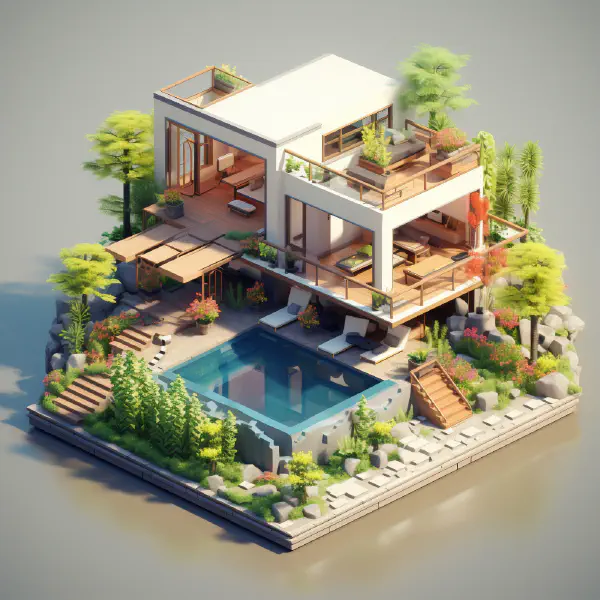
In the realm of technology and innovation, the ability to transform the real world into a virtual one has become an extraordinary feat. One of the key techniques contributing to this transformation is 3D reconstruction from images. This process involves piecing together a three-dimensional model of an object or scene using a collection of 2D images, opening the door to a myriad of applications, from virtual tourism to immersive gaming experiences.
In this blog, we’ll explore the fascinating world of 3D reconstruction and how it plays a pivotal role in creating virtual landscapes.
Understanding 3D Reconstruction:
At its core, 3D reconstruction is about translating the information gathered from 2D images into a cohesive 3D representation. The process typically involves a series of steps, including image acquisition, feature extraction, matching, and finally, the reconstruction of the 3D model.
Image Acquisition:
The journey begins with the capture of multiple images of the object or scene from different perspectives. This diversity in viewpoints is essential for the reconstruction algorithm to piece together a comprehensive 3D model.
Feature Extraction:
Once the images are obtained, the next step is to identify distinctive features within each image. These features serve as unique points of reference that can be tracked across multiple images, forming the foundation for reconstructing the three-dimensional structure.
Matching and Correspondence:
In this phase, the algorithm compares the extracted features across different images to establish correspondences. By determining how these features relate to each other in different images, the system gains insights into the spatial relationships within the scene.
3D Reconstruction:
Armed with the matched features and correspondences, the algorithm then goes to work reconstructing the 3D model. There are various methods employed for this, ranging from traditional stereo vision techniques to more advanced computer vision algorithms and machine learning approaches.
Applications of 3D Reconstruction:
The applications of 3D reconstruction are as diverse as the virtual worlds it helps create. Some notable applications include:
Virtual Tourism: Imagine exploring the wonders of the world from the comfort of your home. 3D reconstruction allows for the creation of virtual replicas of famous landmarks, enabling users to embark on virtual tours with a level of realism that was once unimaginable.
Gaming and Simulation: The gaming industry has embraced 3D reconstruction to enhance the realism of virtual environments. By reconstructing real-world locations or objects, game developers can create immersive and authentic gaming experiences.
Architectural Visualization: Architects and urban planners leverage 3D reconstruction to visualize and explore architectural designs before they are built. This enables them to make informed decisions and refine their creations with a better understanding of the spatial relationships.
Medical Imaging: In the field of medicine, 3D reconstruction is used to convert 2D medical images, such as CT scans or MRI scans, into detailed 3D models. This aids in surgical planning, medical education, and the understanding of complex anatomical structures.
Challenges and Future Developments:
While 3D reconstruction has come a long way, there are still challenges to overcome, such as handling large datasets, improving accuracy, and reducing processing time. Researchers are actively exploring new techniques, including the integration of artificial intelligence and machine learning, to address these challenges and push the boundaries of what is possible.
Conclusion 🏁
In conclusion, 3D reconstruction from images is a remarkable technology that bridges the gap between the physical and virtual worlds. Its impact extends across various industries, offering new possibilities for creativity, exploration, and innovation. As advancements in this field continue, we can expect even more realistic and immersive virtual experiences, further blurring the lines between what is real and what is virtual. The journey to build virtual worlds is an exciting one, and 3D reconstruction is at the forefront, unlocking the door to endless possibilities.